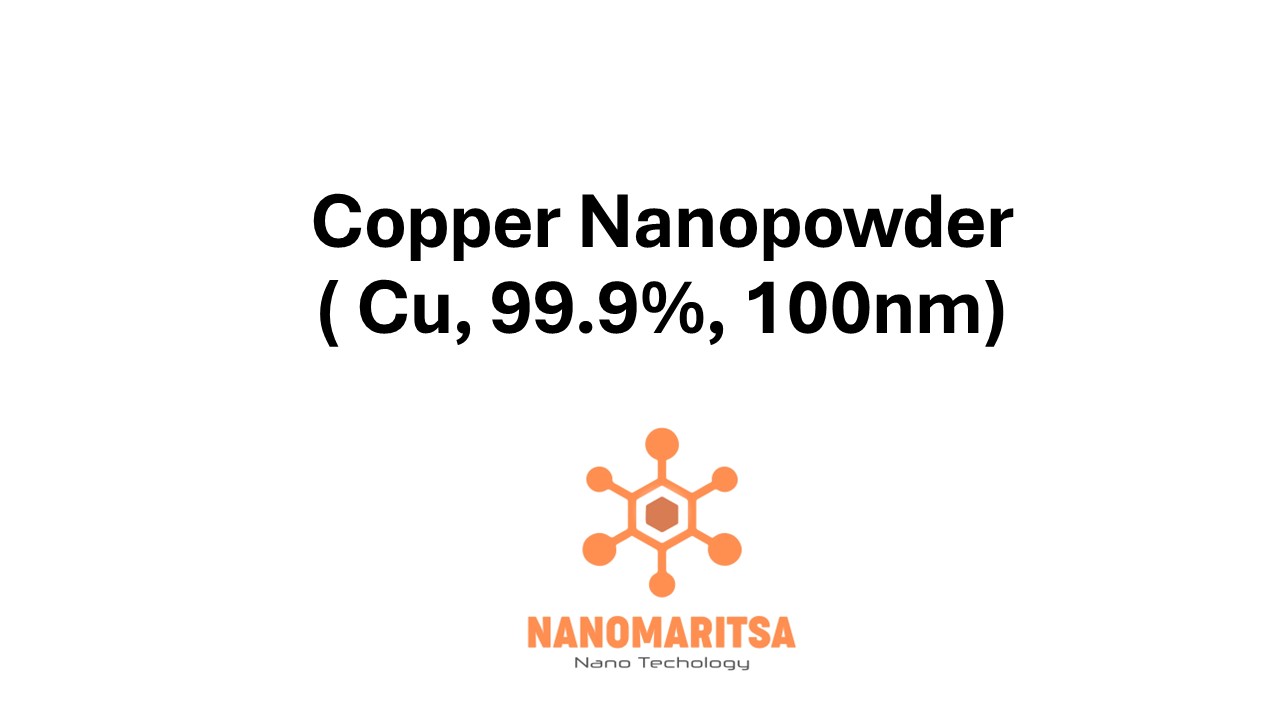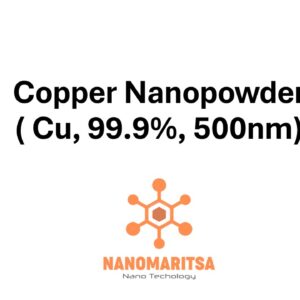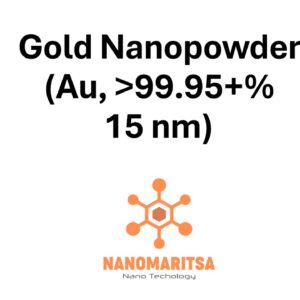Copper Nanopowder (Cu, 99.9%, 100 nm) is a high-purity material with a particle size of 100 nanometers (nm), offering enhanced electrical conductivity, thermal conductivity, corrosion resistance, and reactivity compared to bulk copper. With a purity of 99.9%, this copper nanopowder is ideal for advanced technological applications where high material quality and specific properties are required. Its size and purity make it particularly valuable for industries ranging from electronics and energy storage to catalysis and coatings. Below is a detailed overview of its key features, properties, and applications:
Key Features:
Copper (Cu):
Copper is known for its superior electrical and thermal conductivity, corrosion resistance, and ductility. These properties are maintained in its nanopowder form, with the added benefit of an increased surface area, which enhances its reactivity and performance in various applications.
Purity (99.9%):
The 99.9% purity ensures that the copper nanopowder is free from significant impurities, ensuring reliable performance and consistency in applications that require high material quality. The high purity is particularly crucial in industries such as electronics, catalysis, and energy storage, where precise material characteristics are necessary.
Particle Size (100 nm):
With a particle size of 100 nm, this copper nanopowder offers a good balance between surface area and material stability. The nanopowder’s fine particle size improves its reactivity, making it suitable for catalytic and electronic applications. It also allows for efficient dispersion in various matrices, ensuring uniform properties across different systems.
Properties:
Electrical Conductivity:
Copper is one of the best conductors of electricity, and this property is preserved in copper nanopowder. The high conductivity makes it suitable for applications like conductive inks, printed circuit boards (PCBs), and sensors, where efficient electrical transmission is essential for device performance.
Thermal Conductivity:
Copper’s high thermal conductivity is maintained in nanopowder form, making it ideal for heat management applications. It is used in thermal interface materials (TIMs), heat exchangers, and cooling systems to efficiently dissipate heat from sensitive electronic components, automotive systems, and industrial equipment.
Corrosion Resistance:
Copper has excellent natural corrosion resistance, which is retained in its nanopowder form. This makes copper nanopowder ideal for use in coatings, alloys, and components that need to withstand harsh environmental conditions, such as in marine, industrial, and chemical settings.
High Surface Area:
The nanopowder form of copper provides a large surface area compared to bulk copper. This enhanced surface area increases the material’s reactivity, making it more effective in catalytic processes, including those used in fuel cells, chemical synthesis, and energy storage.
Malleability and Ductility:
Despite its nanoparticle form, copper maintains its malleability and ductility. This makes it easy to incorporate into composite materials or to process into thin films. It is valuable in applications such as flexible electronics, conductive films, and coatings where flexibility and adaptability are essential.
Chemical Stability:
Copper nanopowder is chemically stable and can be used in a variety of environments without degrading. Its stability allows it to perform well in high-temperature or reactive chemical processes, making it a reliable material for demanding applications in various industrial sectors.
Applications:
- Electronics and Conductive Inks:
Copper nanopowder is used extensively in electronics due to its excellent electrical conductivity. It is incorporated into conductive inks for printed circuit boards (PCBs), flexible electronics, sensors, and wearable devices, where high conductivity and low resistance are critical. - Energy Storage and Batteries:
In the energy storage industry, copper nanopowder is used in the production of electrodes for lithium-ion batteries, supercapacitors, and other energy storage systems. The high surface area of the nanopowder helps improve the charge-discharge cycles and the overall performance of energy storage devices. - Catalysis and Chemical Synthesis:
Copper nanopowder acts as an efficient catalyst in several chemical reactions, including hydrogenation, oxidation, and polymerization. It is used in processes such as the production of fuels, fine chemicals, and environmental applications for pollutant removal. Its increased surface area enhances the rate and efficiency of catalytic reactions. - Thermal Management and Heat Dissipation:
Copper nanopowder is used in thermal management applications where heat dissipation is essential. It is incorporated into thermal interface materials (TIMs), heat sinks, and cooling systems to ensure effective heat transfer from sensitive components in electronics, automotive systems, and industrial equipment. - Coatings and Plating:
Copper nanopowder is used in electroplating and coatings, providing high conductivity and corrosion resistance. It is applied in coatings for metal components in industries such as automotive, aerospace, and manufacturing, where high-performance coatings are necessary to prevent wear and corrosion. - Composites and Additives:
Copper nanopowder is used to enhance the electrical and thermal conductivity of composite materials. It is integrated into materials used in automotive, aerospace, and electronics industries, where high conductivity and lightweight materials are required for various applications such as electric vehicle batteries or aerospace components. - Solar Cells and Photovoltaic Applications:
Copper nanopowder is increasingly used in solar cells and photovoltaic technologies due to its excellent conductivity and ability to form thin films. It is used in the production of conductive layers and electrodes in thin-film solar panels, helping to improve the overall efficiency of solar energy conversion. - Antibacterial and Antimicrobial Applications:
Copper is known for its antimicrobial properties, and copper nanopowder is utilized in medical devices, wound dressings, and water purification systems. Its ability to reduce bacterial and viral growth makes it useful in healthcare settings, where infection control is a priority.
Handling and Safety:
Health and Safety Considerations:
Copper nanopowder should be handled with care to avoid inhalation, ingestion, or prolonged skin contact. Appropriate personal protective equipment (PPE), such as gloves, masks, and safety goggles, should be worn during handling. It is also important to work in a well-ventilated area to minimize the risk of inhaling airborne particles.
Storage:
Store copper nanopowder in a cool, dry, and well-ventilated environment to prevent moisture and oxidation, which could degrade the material’s performance. The container should be tightly sealed to protect the powder from exposure to air and humidity.
Precautions:
When handling copper nanopowder, avoid creating dust or aerosols. It is recommended to work in a controlled environment, such as a fume hood, to minimize inhalation risks. Dispose of the material according to local environmental regulations to ensure safe handling and minimize environmental impact.
Summary:
Copper Nanopowder (Cu, 99.9%, 100 nm) is a high-purity material that retains the exceptional electrical and thermal conductivity of copper while offering the added advantages of a nanoparticle size. These advantages include increased surface area, enhanced reactivity, and improved performance in various applications. It is used in a wide range of industries, including electronics, energy storage, catalysis, thermal management, and coatings. Copper nanopowder’s excellent properties make it an essential material for cutting-edge technologies in these fields. Proper handling, storage, and safety measures are critical to maintaining the material’s effectiveness and ensuring safe use.
| Measurement (gr) | 25 grams, 100 grams |
|---|






